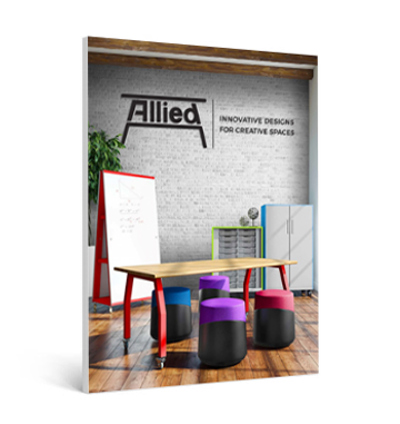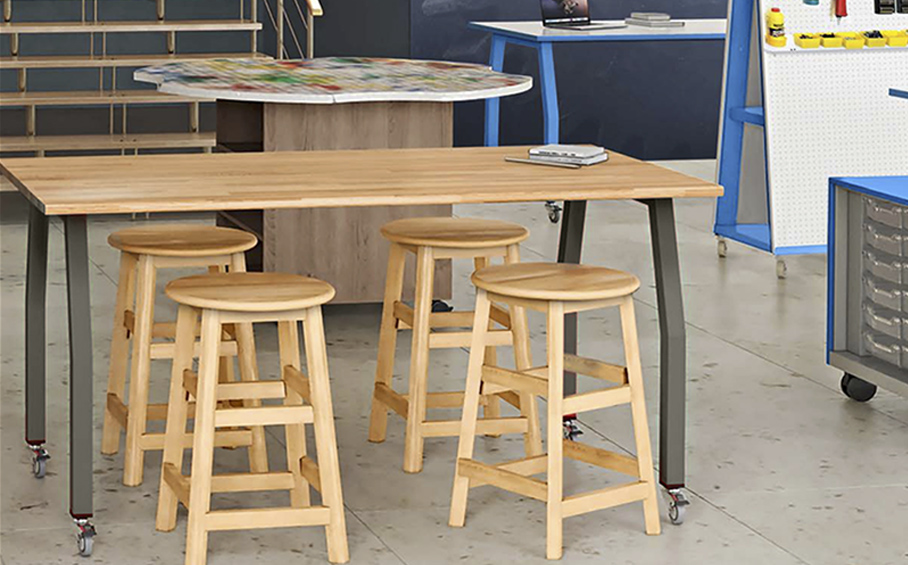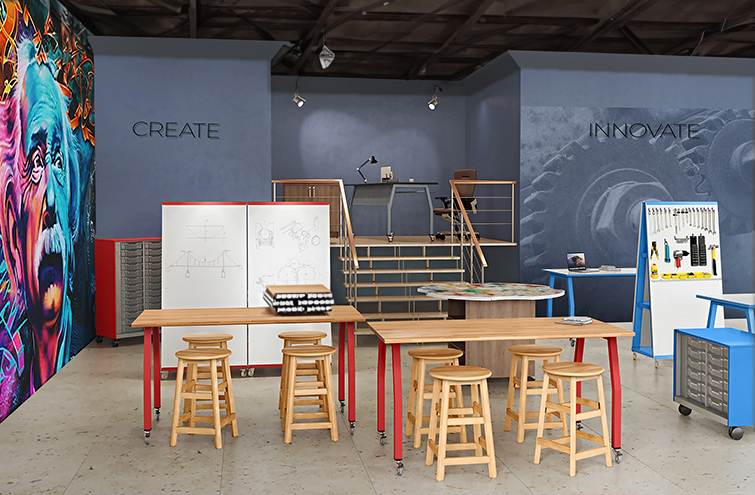Classroom design is a critical element in the educational experience, influencing not just aesthetics but also the psychological and cognitive performance of students. Among the various aspects of classroom design, color holds a unique position. This blog explores the profound impact of classroom color psychology, offering insights into how the right hues can create an optimal learning environment. We’ll delve into the science behind color perception, the specific effects of different colors, and practical tips for educators and designers aiming to enhance learning through thoughtful color choices.
Understanding Classroom Color Psychology
Color psychology is the study of how hues affect human behavior and mood. In educational settings, the colors chosen for walls, furniture, and decorations can significantly influence students’ emotions, attention spans, and overall learning outcomes. Here’s a closer look at why color matters in classrooms:
- Emotional Impact: Colors can evoke various emotional responses. For instance, warm colors like red and orange can stimulate energy and excitement, while cool colors like blue and green can create a calming effect.
- Attention and Focus: Certain colors can help maintain students’ focus and attention. For example, yellow is often associated with increased concentration and clarity of thought.
- Memory and Retention: Colors can also aid in memory retention. Studies have shown that color-coding information can enhance recall, making it easier for students to remember and organize information.
The Best Colors for Classrooms
Different colors serve different purposes, and their impact can vary depending on the context. Here’s a breakdown of some key colors and their potential benefits in educational settings:
Blue: The Calming Hue
Blue is known for its calming and soothing properties. It can reduce anxiety and create a peaceful learning environment. This color is particularly beneficial in classrooms where focus and concentration are required, such as libraries or study areas.
- Cognitive Impact: Blue is associated with improved productivity and better cognitive performance. It helps in creating a serene atmosphere that is conducive to learning and problem-solving.
- Practical Tips: Use blue for walls or furniture in areas where quiet study is encouraged. Accent pieces in blue can also help balance more stimulating colors in the classroom.
Green: The Color of Balance
Green represents balance, harmony, and growth. It’s an excellent choice for promoting a sense of well-being and fostering creativity.
- Psychological Effects: Green has been shown to reduce eye strain and create a restful environment. It can help in maintaining a calm and relaxed atmosphere, which is ideal for prolonged periods of study.
- Practical Tips: Incorporate green through plants, green boards, or wall paint. Green can be especially effective in areas designated for reading or collaborative work.
Yellow: The Energizer
Yellow is a bright and cheerful color that can stimulate mental activity and energy. It’s often used to grab attention and enhance focus.
- Cognitive Impact: Yellow is linked with increased concentration and faster decision-making. It can lift spirits and inspire a positive mood, which is beneficial in creative subjects like art and writing.
- Practical Tips: Use yellow in moderation as too much can be overstimulating. Consider yellow accents on walls, bulletin boards, or classroom supplies.
Red: The Stimulator
Red is a powerful color that can increase energy levels and evoke strong emotions. However, it should be used sparingly in educational settings.
- Psychological Effects: While red can boost energy and enthusiasm, it can also be overwhelming and increase feelings of stress if overused.
- Practical Tips: Use red for highlighting important information or creating focal points in the classroom. It’s best suited for areas where energetic activities take place, such as gymnasiums or activity centers.
Applying Color Psychology in Classroom Design
Integrating the principles of color psychology into classroom design requires a thoughtful approach. Here are some practical steps to help educators and designers use color effectively:
- Assess the Classroom Environment: Consider the existing layout, natural light, and the primary activities that will take place in the classroom. Different spaces may benefit from different color schemes.
- Balance Colors: Combine stimulating and calming colors to create a balanced environment. For example, pair bold colors like red or yellow with neutral tones to avoid overstimulation.
- Use Accent Colors: Incorporate colors through accessories, furniture, and educational materials rather than relying solely on wall paint. This approach allows for flexibility and easy updates.
- Consider Student Preferences: Engage students in the design process by gathering their input on color choices. This can increase their sense of ownership and comfort in the classroom.
- Experiment with Color Combinations: Don’t be afraid to try different color combinations to see what works best for your specific classroom needs. Use sample swatches and observe how different hues interact in the space.
Conclusion: The Power of Color in Education
The strategic use of color in classrooms goes beyond mere decoration. It’s a powerful tool that can enhance learning, improve focus, and create a positive emotional climate. By understanding the principles of classroom color psychology and applying them thoughtfully, educators and designers can create environments that support and inspire students.
In summary, the best colors for classrooms depend on the desired outcomes. Blue and green are excellent for calming and focus, yellow for stimulating creativity and attention, and red for energizing activities. Balancing these colors thoughtfully within the classroom environment can lead to improved student well-being and academic performance.
For further reading on the impact of color in educational settings, check out resources from color psychology experts and educational design specialists. By staying informed and open to experimentation, you can harness the power of color to create dynamic and effective learning spaces.
Sources:
- “The Psychological Impact of Color in Learning Environments,” Edutopia
- “Classroom Design and Learning,” The Center for Green Schools
- “Color Psychology in Education: How Colors Affect Learning and Behaviour,” Color Matters
- “The Role of Color in Educational Spaces,” Learning Spaces Design Magazine








